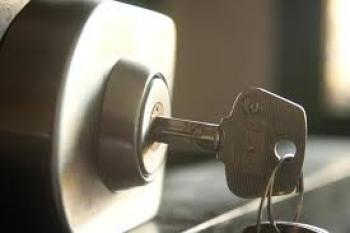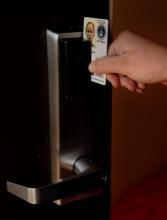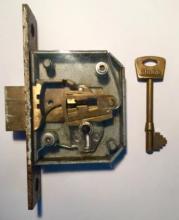How Locksmiths Cut Keys from Locks
What is a person to do when they have a perfectly functioning lock, but a worn down, broken, or irreplaceable set of keys for that lock? Should the lock itself be replaced or new keys made? Obviously whatever you decide to do is up to you, but an expert locksmith, like the ones at Leo's Locksmiths can cut and create keys from the inner workings of a lock and have that lock remain as functional, sturdy, and protective as it was before. So how is this done? We will tell you how!
How are New Keys Cut
Making a key from the inside of a lock may seem like a backwards process. In large part it kind of is, but there are times when it is necessary. This is not a process that can or should be done independently and for the most part, it cannot be. Still, learning how the process unfolds and takes shape is pretty incredible.
A locksmith must carefully inspect and follow the key code, or specific measurements of the lock and keyway, in order to recreate the key that fits. There are two types of key codes that affect this process, but the one locksmiths are most concerned with here is the bitting code. Bitting codes are comparable to Braille but on the inside of a lock. These codes are critically important as they are most often used to create the original key.
 When Cutting a New Key is Possible
When Cutting a New Key is Possible
With these types of key codes usually found on the keys themselves, locksmiths must get a little creative with how to go about creating a new key.
In fact, locksmiths, even the best among them, have to contact lock and key manufacturers to get the bitting key codes before they even consider recreating a key.
Once a locksmith has the keycode from the manufacturer, they can go about impressioning a key directly from the lock. In this process, a blank key is inserted, several times in fact, into the lock’s cylinder. The locksmith then makes sure that the internal mechanisms, such as pins that attach to the cylinder and are responsible for creating the grooves and indentations the key needs, work in conjunction with one another.
Once the pins have done their part and the key is set with its designated grooves and indentations, the locksmith must file the key down and smoothen its rough edges. This enables the key to fit properly into the lock for which it has been created.
It is important to note here that the blank key used to create the new key must be able to withstand the force and pressure of the machines creating and shaping it. Certain materials, such as aluminum and copper, are not good choices because they are both far too malleable to function as keys of any quality and break easily.
Because this entire process is so delicate in nature, a vice grip is kept on hand. The vice grip acts as an extractor of keys, particularly blank ones, that may break during impressioning. This, of course, makes the impressioning process significantly more challenging, which is again why only trained, licensed, expert locksmiths should be entrusted to carry this out.
When Cutting a New Key is Just Not Possible
If impressioning a blank key simply cannot be done, taking the lock apart, piece by piece, element by element, must take place.
The inner parts of the lock must be handled with tremendous care, as any warping of the material or damage of its elements, can pretty much end the process before it begins.
Pins, internal parts, and cylinders must be taken out of the inside of the lock and measured in order to make a key when impressioning simply will not work.
Ironically enough, locksmiths have to pick the lock in order to open it and take measurements for the key they are about to create.
No matter how much expertise any locksmith has developed, and no matter how delicately they handle the inner parts of a lock, being able to replace a key by using the lock itself, is very difficult and not a process anyone should guarantee.
Key Cutting Takeaways
Though the process of recreating a key from its lock, rather than another key for the same lock, is a remarkable process that takes lock technology to a rather sophisticated point. Still, there are things that have to be considered.
For example:
-
Not every key comes with a bitting code, nor does every lock allow for impressioning. Thinking that being able to recreate one key in this fashion is the “go to” way for this process, is wrong. Not every locksmith may be able to do this for you and wait times for a reproduced key cut from a lock may take far longer than making a key duplicate.
-
Some keys are not meant to be recreated, according to the manufacturers who originally designed them.
-
Creating new keys through this process can be terribly costly. While making a copy of a key can come to just a few dollars, and a brand new lock can come to a few more, the price of cutting a key from its lock can cost well up to $300 for one key. And if you lose that one, you may not want to shell out that kind of money again.
Ideally, it is best not to lose your keys. This is, of course, an obvious away to avoid this process altogether, but, as they say, life happens. It is always good to know that there are ways to remedy a situation in which you need to replace a key that you cannot make a copy of. In addition, watching the process unfold is fascinating and remarkable!
If you need a key cut from a lock, or have any other security matters that need to be addressed, call Leo's Locksmiths for an estimate and advice on what you need done.


 LeosLocksmith Covering LA
LeosLocksmith Covering LA

